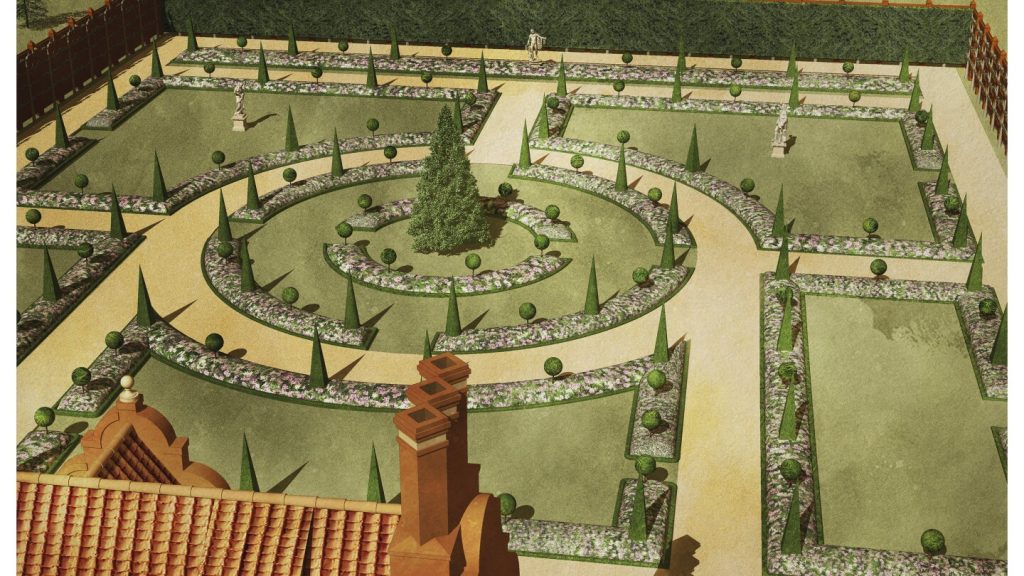Archaeologists in Williamsburg, Virginia are uncovering an ornamental garden that belonged to John Custis IV, a wealthy politician and tobacco plantation owner in colonial America. This garden was where Custis and enslaved gardeners grew exotic plants from around the world, making it a status symbol for the elite at the time. The excavation of the garden has revealed fence posts, gravel paths, and soil stains showing where plants were grown in rows. The artifacts found also shed light on the lives of the enslaved individuals who worked in the garden, including pierced coins, animal remains, and a chamber pot.
The excavation at Colonial Williamsburg is significant not only for uncovering Custis’ ornamental garden but also for highlighting the contributions of the enslaved gardeners who maintained it. Through detailed landscape archaeology efforts, the museum is reconstructing Custis’ home and garden known as Custis Square. The restoration will be done without the benefit of surviving maps or diagrams, relying instead on historical accounts and archaeology findings. The museum has also been working to tell a more complete story of Virginia’s colonial history, including the experiences of Black Americans who were part of the community but often overlooked in historical narratives.
John Custis IV’s garden was a place of botanical exploration, where he and British botanist Peter Collinson exchanged seeds and plants from across the globe. The gardeners planted a variety of exotic plants, including tomatoes, strawberries, pistachios, and almonds, among others. The garden was a display of Custis’ wealth and sophistication, showcasing his ability to cultivate rare and unusual plants. The museum is still researching the legacy of the garden and the individuals who worked in it, including descendants of the enslaved gardeners who have provided valuable insight into their ancestors’ lives.
The excavation has provided new information about the layout and contents of the garden, as well as the cultural practices of the enslaved gardeners. The discovery of animal remains, pierced coins, and other artifacts indicates a complex and layered history that is being explored through further research. The museum’s efforts to reconstruct Custis’ home and garden are part of a broader initiative to tell a more inclusive and diverse history of Colonial Williamsburg. By highlighting the stories of the enslaved individuals who contributed to the garden’s creation and maintenance, the museum is working to provide a more comprehensive understanding of the past.
The garden at Custis Square was a symbol of wealth and privilege in colonial America, a place where rare and exotic plants were cultivated for the enjoyment of the elite. Through the excavation and restoration efforts, Colonial Williamsburg is shedding light on the lives of the enslaved individuals who were essential to the operation of the garden. The artifacts uncovered at the site offer a glimpse into the daily lives and traditions of these individuals, adding depth and complexity to the history of the garden. By continuing to research and share these stories, the museum is working to create a more accurate and inclusive interpretation of the past for future generations.
The archaeological excavation of John Custis IV’s ornamental garden in Williamsburg, Virginia is providing valuable insights into the history of colonial America and the contributions of enslaved individuals to the cultivation of exotic plants. The museum’s efforts to reconstruct Custis’ home and garden, as well as its broader initiative to tell a more complete history of Colonial Williamsburg, are bringing to light the stories of those who were often marginalized or overlooked in traditional historical narratives. Through continued research and outreach to descendants of the enslaved gardeners, Colonial Williamsburg is working to honor the legacy of those who played a crucial role in shaping the landscape and history of the region.


